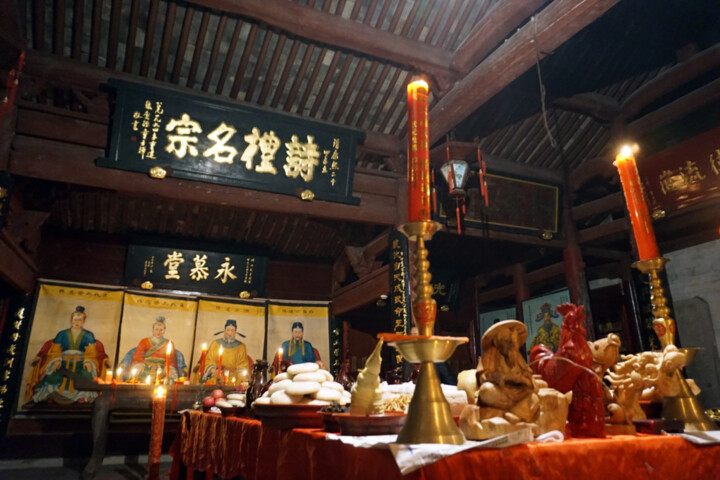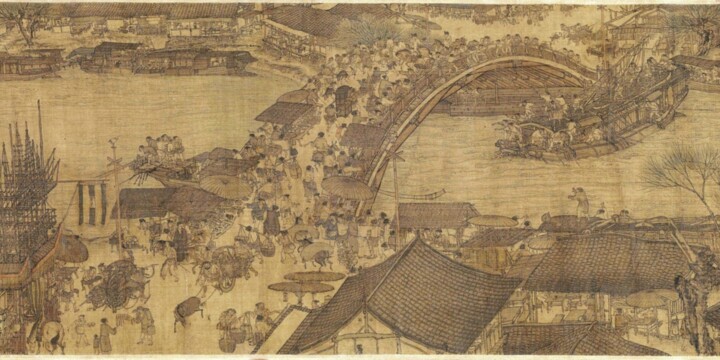Historical Background
The Qingming Festival, also known as Tomb-Sweeping Day, is a traditional Chinese festival celebrated by ethnic Chinese communities in various countries, including China, Hong Kong, Macau, Taiwan, and several Southeast Asian nations. Observed on the first day of the fifth solar term of the traditional Chinese lunisolar calendar, it falls 15 days after the Spring Equinox, usually on April 4th, 5th, or 6th. The festival, a celebration of spring, involves Chinese families visiting the tombs of their ancestors to clean gravesites and make ritual offerings, such as traditional food, joss sticks, and joss paper, in honor of their ancestors.
The origins of Qingming Festival date back over 2,500 years and are linked to the Cold Food or Hanshi Festival, which commemorated Jie Zitui, a nobleman from the state of Jin during the Spring and Autumn Period. Jie followed Prince Chong'er into exile and once cut flesh from his thigh to provide his lord with sustenance. When Chong'er, later Duke Wen of Jin, neglected to reward Jie, Jie retired to a forest with his mother. Unable to find Jie, the duke ordered the forest to be set on fire, inadvertently causing their deaths. In memory of Jie, it was decreed that no fires should be lit on the anniversary of his death, leading to the Cold Food Festival. Over time, this practice evolved, and the festival was shortened to three days around the Qingming solar term in mid-spring.
The present significance of Qingming Festival is attributed to Emperor Xuanzong of the Tang dynasty. In AD 732, to curb the extravagant ancestral ceremonies held by wealthy citizens, Xuanzong decreed that respects could be formally paid only once a year during Qingming. Today, Qingming is a public holiday in mainland China, where it is associated with the consumption of qingtuan, green dumplings made of glutinous rice and Chinese mugwort or barley grass. In Taiwan, the holiday was previously observed on April 5th to honor the death of Chiang Kai-shek, although this practice has waned with his declining popularity. Similar observances are held in the Ryukyu Islands, known locally as Shīmī.

Tong's ancestral hall, Lantern Festival offering, © Three huntings, via Wikipedia
Themes and Symbols in the Art of Qingming
The Qingming Festival, also known as Tomb-Sweeping Day, is rich in themes and symbols that are deeply embedded in Chinese culture and artistic expressions. The primary activity of the festival is tomb-sweeping, where families visit the graves of their ancestors to clean the tombstones, offer prayers, and make ritual offerings. This practice is a manifestation of Confucian filial piety and respect for one's ancestors, reflecting the deep reverence for the deceased that is a cornerstone of Chinese tradition.
Symbolism of Ritual Purity and Protection: One of the significant symbols of Qingming is the use of pomegranate and willow branches. These branches are believed to possess the power to ward off evil spirits and misfortune. People often wear willow twigs on their heads or place willow branches at their homes, similar to the use of palm leaves on Palm Sunday in Christianity. This ritual underscores a common theme in Qingming art and traditions: the desire for protection and purity.
Ancestral Offerings and Paper Replicas: Artistic representations of Qingming often include scenes of families making offerings at the gravesites. Traditional offerings include food, joss sticks, and joss paper. Joss paper, also known as spirit money, and paper replicas of material goods such as houses, cars, and electronic devices are burned to provide for the ancestors in the afterlife. This practice highlights the continuity of care and provision for ancestors, which is a central theme of the festival.
Kite Flying and Outdoor Activities: Qingming is not only a time for solemn remembrance but also for family gatherings and outdoor activities. Artistic depictions of the festival often show people flying kites, which are sometimes shaped like animals or characters from Chinese folklore. Kite flying during Qingming symbolizes freedom and the release of worries, connecting the earthly realm with the heavens. This joyful aspect of the festival is reflected in traditional songs and poems celebrating the beauty of spring and the importance of family.
Historical and Heroic Commemorations: The festival also serves as a time to honor national and legendary heroes. Major historical events, such as the April Fifth Movement and the Tiananmen Incident, have occurred on Qingming, adding layers of political and social significance to the festival. Artistic works often capture the spirit of remembrance and respect for those who have made significant contributions to the nation.
Integration of Local Customs: In Malaysia and Singapore, Qingming retains its traditional essence while incorporating local customs. For instance, the festival is marked by elaborate family gatherings and rituals that trace back to the Ming and Qing dynasties. The overseas Chinese communities maintain these practices meticulously, reflecting a blend of ancient traditions with contemporary observances. This cultural continuity is often depicted in art that showcases multi-generational families participating in Qingming rituals.
Modern Adaptations: Contemporary Qingming art also reflects modern adaptations of the festival. For example, some families now opt to carry flowers instead of burning paper offerings, aligning with environmental concerns. This shift is represented in modern artistic interpretations, which balance traditional themes with modern sensibilities.
Qingming in Modern Art
Painting: The Qingming Festival has been a recurring theme in Chinese painting, notably depicted in the famous Song dynasty scroll "Along the River During the Qingming Festival" attributed to Zhang Zeduan. While this masterpiece portrays the bustling life of Kaifeng city, it does not explicitly illustrate the holiday's activities. Despite this, the scroll remains a cherished cultural artifact, offering a window into the past and inspiring generations of artists.

Along the River During the Qingming Festival, detail of the original version showing wooden bridge, © Three huntings, via Wikipedia
Literature: Qingming Festival has left its mark on Chinese literature, with notable mentions in various literary works. Du Mu's poem captures the essence of Qingming with its poignant imagery of drizzling rain and desolate roads, evoking a sense of longing and reflection. Similarly, in Vietnamese literature, the festival is depicted in The Tale of Kieu, where the protagonist encounters the ethereal beauty of spring during Thanh Minh, showcasing the enduring influence of Qingming across different cultures and literary traditions.
The Qingming Festival, spanning over 2,500 years of tradition, epitomizes the enduring reverence for ancestors and the rich cultural heritage of China. From its ancient origins commemorating Jie Zitui to its modern manifestation as a public holiday marked by green dumplings and family gatherings, Qingming has evolved while preserving its core values of honoring the past. Through the art of Qingming, depicted in paintings capturing ancient city life and literature evoking the beauty of spring, we witness not only the rituals of tomb-sweeping but also the timeless themes and rich symbolism ingrained in Chinese culture. The festival's adaptation in overseas Chinese communities and its modern interpretations underscore the resilience and adaptability of tradition in a changing world. Qingming transcends its role as a festival to become a profound expression of cultural identity, collective memory, and the eternal cycle of life and remembrance, bridging the gap between the past and the present.


 Selena Mattei
Selena Mattei